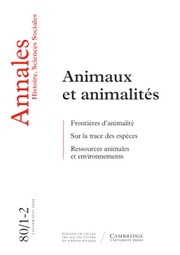Article contents
L'espace, indicateur historique, révélateur structural : l'exemple bamoum (Cameroun)
Published online by Cambridge University Press: 25 May 2018
Extract
La description et l'analyse de l'espace qu'occupe l'objet de son étude sont presque toujours de règle dans les ouvrages de l'anthropologue. Il nous présente des plans d'habitation, d'unités résidentielles : camps des nomades, villages et groupes de voisinage des agriculteurs. Des générations de chercheurs sont aujourd'hui familiarisés avec les implantations d'établissements humains aussi différents que les umuzi nguni de l'Afrique méridionale et les teng talé du nord du Ghana ; il nous offre aussi, plus rarement, des plans de ville mais, à notre connaissance, il n'est jamais allé jusqu'à étudier l'implantation de la population à l'échelle d'une communauté politique, à moins que celle-ci ne coïncide avec le village ou le groupe de voisinage. De cet intérêt de l'anthropologie pour l'espace, ancien et constant, l'on peut sans doute rappeler les raisons principales.
Summary
The task of historical reconstitution which continues in Africa must make use of all possible forms of information. Apart from the oral traditions, often rich but almost always placing before us certain presumptions, it is appropriate to make the greatest possible use of an analysis of the implantation into the soil of the constituent elements of society. Such analyses are customary in anthropology, rarely however going beyond the scale of the villages though they could be extended to the entire political sphere of a society. Investigations conducted in Bamoum country, beginning with the positions of all the descendence groups, have permitted the reconstitution of all the processes of the society's development since the foundation of the kingdom, probably in the 16th century, until the first decades of the 20th century, and brought to the surface the homological relations between the state and the subordinate entities which are not discernible at the level of discourse. History and structure are thus illuminated by means of concrete data which, moreover, may be used either to invallidate or substantiate the oral traditons.
- Type
- Le jeu des Pouvoirs et des Lignages
- Information
- Copyright
- Copyright © Les Éditions de l'EHESS 1985
References
Bibliographie
- 2
- Cited by


